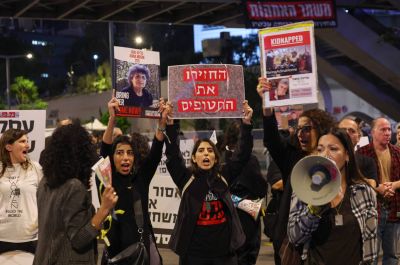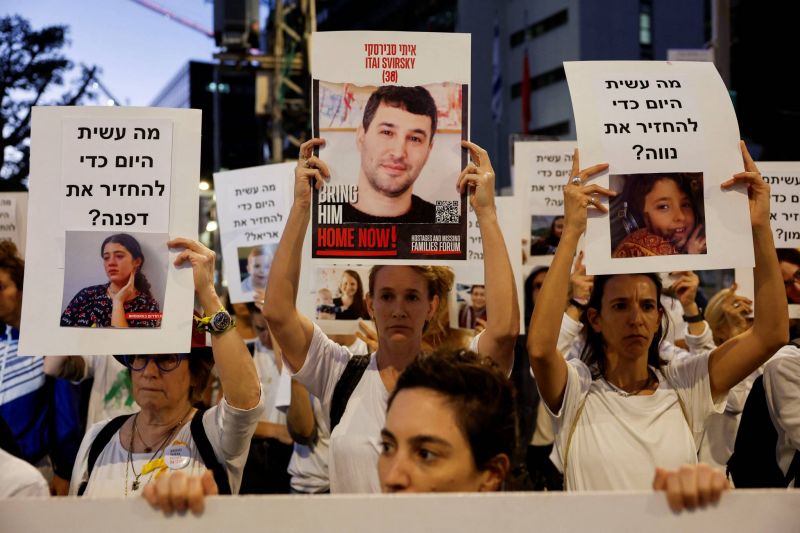
Protesters hold signs demanding the liberation of hostages who are being held in the Gaza Strip after they were seized by Hamas gunmen on October 7, in Tel Aviv, Israel November 21, 2023. REUTERS/Amir Cohen
Israel's government voted on Wednesday to support a deal for Hamas to free 50 women and children held as hostages in Gaza, since October 7 in exchange for a four-day pause in fighting, the office of Prime Minister Benjamin Netanyahu said. Hamas says the hostages will be released in exchange for 150 Palestinian women and children being held in Israeli prisons.
So, what do we know about the details of the deal between Israel and Hamas?
1. Truce or ceasefire?
The language here is important. Israel's government has approved a four day pause, and has accepted a deal with Hamas to free 50 hostages. A statement, published via the Palestinian Information Centre, says this is in exchange for 150 Palestinian women and children being held in Israeli jails.
This deal is a "truce," a temporary pause in fighting, and not a ceasefire. We had strong indications this would be the case since Tuesday, when Hamas leader Ismail Haniyeh said in a statement that Israel and Hamas were "close to reaching a deal on a truce" - using the Arabic word "hudna," suggesting a non-permanent kind of pause rather than a prolonged ceasefire. Israel has repeatedly opposed a ceasefire, fearing Hamas could use it as an opportunity to rearm.
2. Three key things the truce agreement involves
The release of hostages and Palestinian prisoners: A statement by Israel's Prime Minister says 50 out of some of the 230 remaining hostages who have been held captive by Hamas in Gaza since the Oct. 7 assault would be released, they will be women and children, and there is no talk of freeing Israeli soldiers. Hamas says the deal is in exchange for 150 Palestinians being held in Israeli jails.
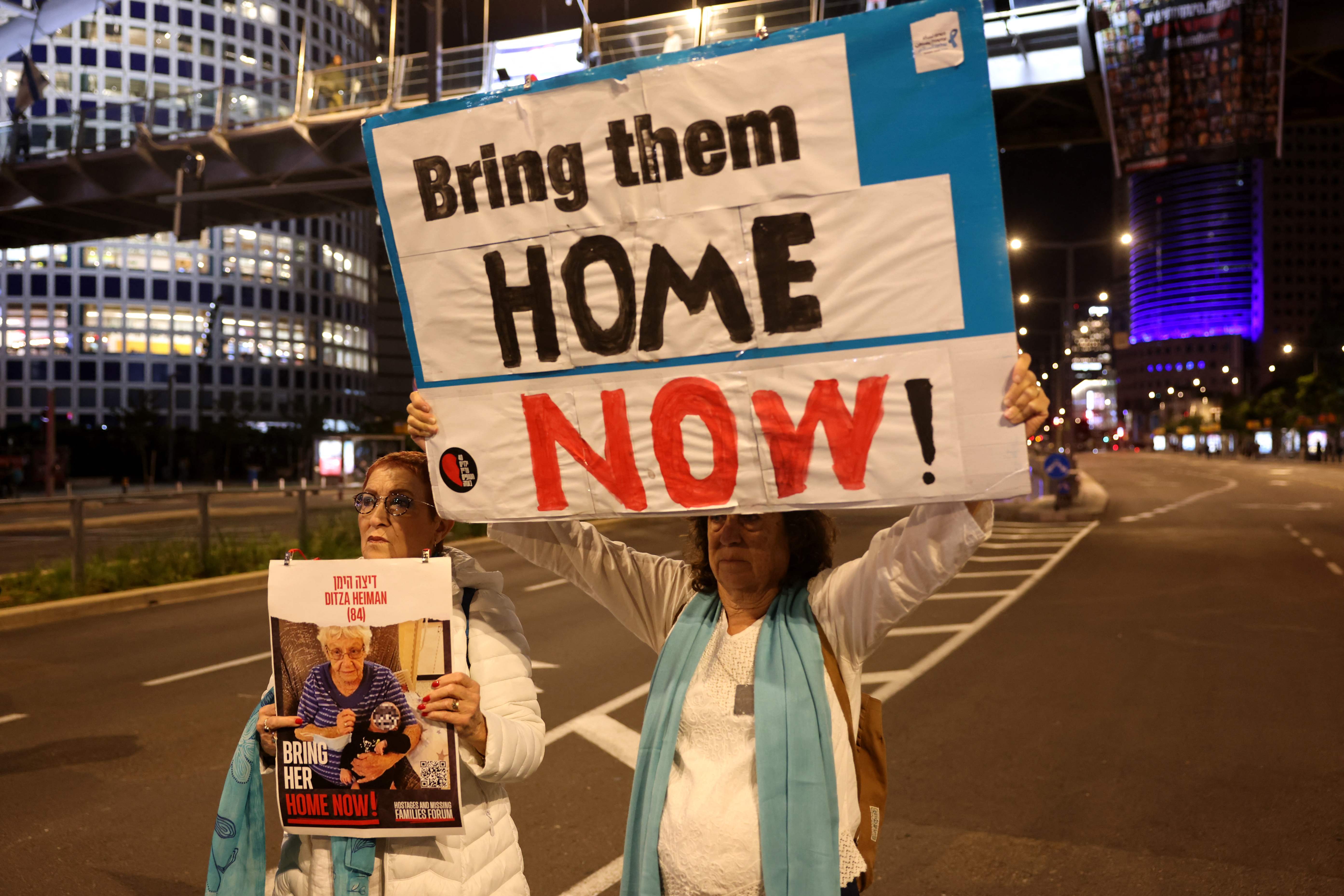 Families of Israeli hostages held by Palestinian militants in the Gaza Strip protest outside the ministry of defence in Tel Aviv calling on November 21, 2023, amid ongoing battles between Israel and the Palestinian armed group. Israeli Prime Minister Benjamin Netanyahu said on November 21, that "we are making progress" on the return of hostages Hamas seized during the October 7 attacks, after mediators said a truce deal was in sight. (Photo by AHMAD GHARABLI / AFP)
Families of Israeli hostages held by Palestinian militants in the Gaza Strip protest outside the ministry of defence in Tel Aviv calling on November 21, 2023, amid ongoing battles between Israel and the Palestinian armed group. Israeli Prime Minister Benjamin Netanyahu said on November 21, that "we are making progress" on the return of hostages Hamas seized during the October 7 attacks, after mediators said a truce deal was in sight. (Photo by AHMAD GHARABLI / AFP)
It appears the deal has been shaped in a way that would encourage the release of more hostages than the initial 50 - which could in turn extend the pause in fighting. For every additional 10 hostages released, the pause would be extended by another day, according to a statement by Israel's Prime Minister's Office, without mentioning the release of Palestinian prisoners in exchange.
A senior US official told reporters on Tuesday that "the way the deal is structured is it very much incentivizes the release of everybody," reports BBC News.
Since October 7. Hamas has released four captives: U.S. citizens Judith Raanan, 59, and her daughter, Natalie Raanan, 17, on Oct. 20, citing "humanitarian reasons," and Israeli women Nurit Cooper, 79, and Yocheved Lifshitz, 85, on Oct. 23.
The armed wing of the Palestinian militant group Islamic Jihad, said on Tuesday that one of the Israeli hostages it has held had died. "We previously expressed our willingness to release her for humanitarian reasons, but the enemy was stalling and this led to her death," reports Reuters, citing the Al Quds Brigades on its Telegram channel.
Pause in fighting: With 13,000 people killed by Israeli bombardements in Gaza since the Oct. 7 assault by Hamas on Israel, pressure had been mounting from aid agencies, the international community and regional actors to pause the fighting. Swathes of the tensely populated Hamas-ruled enclave has been flattened. About two-thirds of its 2.3 million people homeless, reports Reuters, citing authorities in Gaza. More than 5,350 Palestinian children have been killed, according to UNICEF.
In the deal a four-day pause has been agreed. There there will be no Israeli air traffic in southern Gaza for four days, as well as a six hour pause, from 10:00 to 16:00 local time, in northern Gaza. According to BBC Correspondent, Yolande Knell, the deal will allow the safe passage of people from north to south Gaza but "it will not permit the hundreds of thousands of displaced Palestinians from the north to return home."
Israeli media including Channel 12 news said the first release of hostages was expected on Thursday. Qatar, which mediated the deal, says it will announce the timeline of when the deal will start in the next 24 hours.
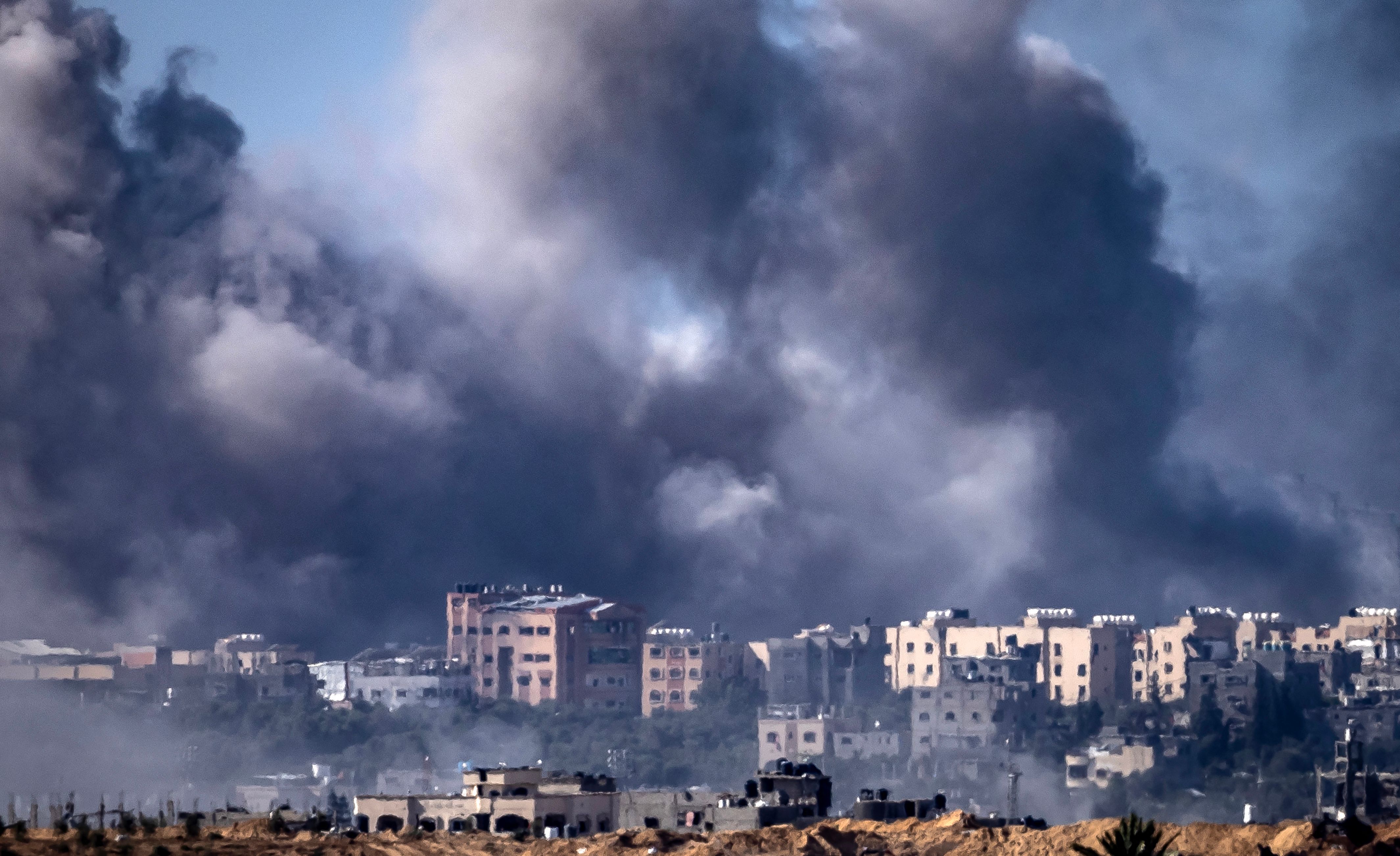 A picture taken from a position near Sderot along the Israeli border with the Gaza Strip shows smoke billowing during an Israeli bombardment on the northern Palestinian territory on November 21, 2023, amid the ongoing battles between Israel and the Palestinian group Hamas. (Photo by FADEL SENNA / AFP)
A picture taken from a position near Sderot along the Israeli border with the Gaza Strip shows smoke billowing during an Israeli bombardment on the northern Palestinian territory on November 21, 2023, amid the ongoing battles between Israel and the Palestinian group Hamas. (Photo by FADEL SENNA / AFP)
Aid: Aid is desperately needed to help some of the 1.7 million people displaced across the Gaza Strip, and some 30,000 who have been injured since Oct. 7, according to the Gaza Health Ministry.
Weeks of intense bombardment and severe shortages of fuel and medical supplies mean most Gaza hospitals have stopped functioning. According to the Nov. 18 report by the United Nations Office for the Coordination of Humanitarian Affairs (OCHA), 25 of the Strip's 35 hospitals are out of service and 55 ambulances are damaged, reports AFP.
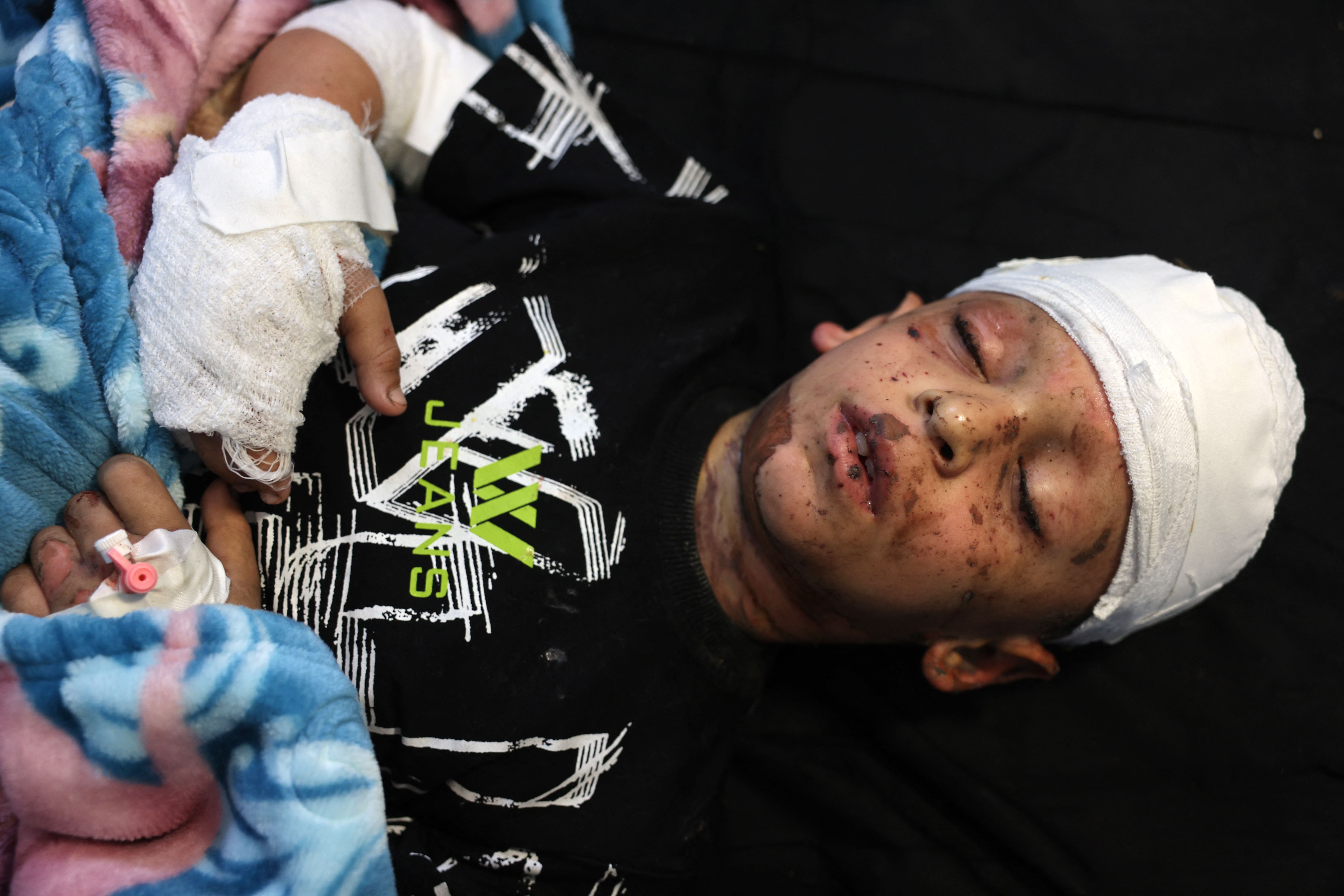 Wounded Palestinian Mohammed Wesam Qadora from the Jabalia refugee camp arrives at the Naser Hospital at Khan Yunis after being transferred from the Indonesian Hospital to the southern Gaza Strip, on November 21, 2023. (Photo by MOHAMMED ABED / AFP)
Wounded Palestinian Mohammed Wesam Qadora from the Jabalia refugee camp arrives at the Naser Hospital at Khan Yunis after being transferred from the Indonesian Hospital to the southern Gaza Strip, on November 21, 2023. (Photo by MOHAMMED ABED / AFP)
Now, under the deal, mediator Qatar, says hundreds of trucks carrying aid, medical supplies and fuel will be allowed to enter Gaza, reports BBC News.
In reaction to the news of the deal being approved by Israel's government, US President, Joe Biden said in a statement the humanitarian assistance agreed in the deal will "alleviate the suffering of innocent Palestinian families in Gaza".
3. What previous cases of Israeli hostage negotiations with Hamas can tell us
The most notable precedent with regards to hostage negotiation is the case of Gilad Shalit, an Israeli army soldier who was kidnapped in 2006 by Hamas militants who tunneled into Israel. After five years of captivity, he was released, marking the first time an Israeli soldier had been returned alive since 1985. It was the largest prisoner exchange in Israel’s history, with 1,027 Palestinian prisoners freed.
Among those freed was Yahya Sinwar, Hamas' current leader in Gaza. At the time, Palestinian President Mahmoud Abbas addressed a cheering crowd in Ramallah, praising the former detainees as "freedom fighters."
On Tuesday Israeli far-right minister Ben Gvir pointed to the release of Sinwar in return for Gilad Shalit as as example of "a prisoner exchange ending badly," reports the Times of Israel.
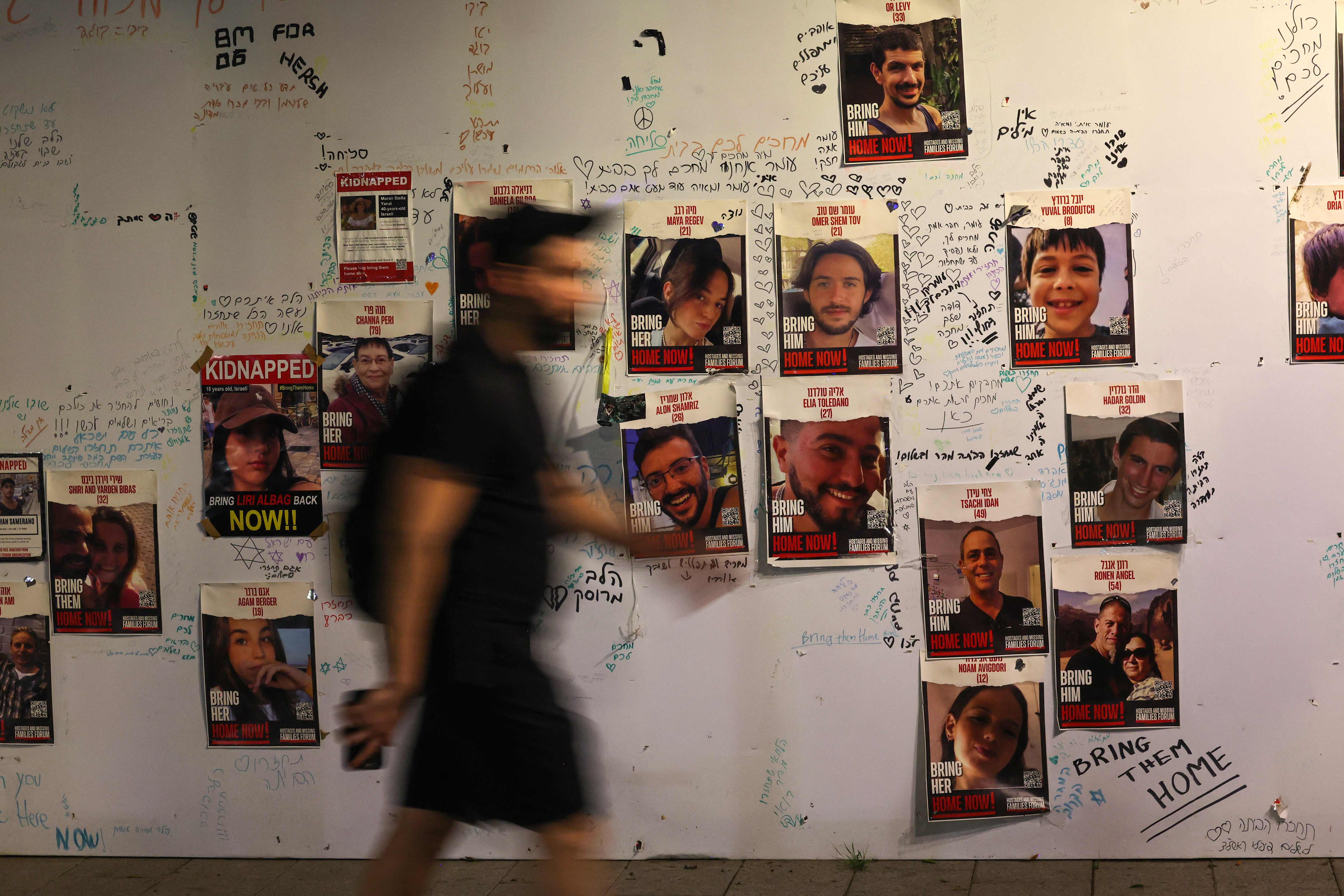 A man walks past portraits of Israeli hostages posted on a wall in Tel Aviv on November 21, 2023, (Photo by AHMAD GHARABLI / AFP)
A man walks past portraits of Israeli hostages posted on a wall in Tel Aviv on November 21, 2023, (Photo by AHMAD GHARABLI / AFP)
4. Why the stakes are different
With 230 hostages held captive, the calculus for Benjamin Netanyahu and his war cabinet is as complex as it is dangerous. After weeks of insisting on the need to pursue a military campaign to put pressure on Hamas to release hostages, it seems the dial has shifted for Bibi's government.
Haaretz columnist Amos Harel suggests this stems "mainly from a realization by [Yoav] Gallant and the Israeli army chief of staff Herzl Halevi that it’s impossible to focus solely on the military offensive in northern Gaza."
5. What happens next?
A key question remains: If this deal is executed successfully, how long will it hold for? And what happens next in Israel's military campaign?
Benjamin Netanyahu stated at the beginning of the war that his ultimate objective was to "demolish Hamas" and its tunnel network. On Wednesday a statement by the Prime Minister's office reiterated its intent, following the hostage deal, stating that theIsraeli government and its army will "continue the war in order to return home all of the hostages, complete the elimination of Hamas and ensure that there will be no new threat to the State of Israel from Gaza."
On Tuesday the Wall Street Journal reported that an Israeli military campaign in southern Gaza is still in scope. The US newspaper reported that Israeli warplanes dropped leaflets in southern Gaza in recent days, encouraging people living there to flee to al-Mawasi to create a "humanitarian zone."
"Some Israeli military officials acknowledge that it would be impossible to corral two million Gaza residents into al-Mawasi, which is about the size of Los Angeles’ LAX airport," reported the paper.
